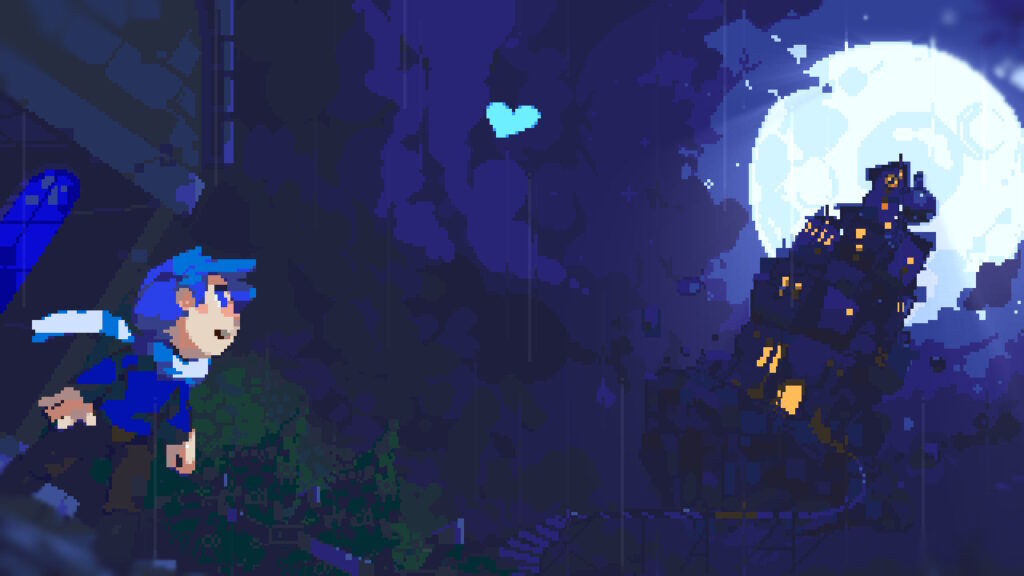
Revita is here from BenStar and publisher Dear Villagers. Now, you might remember that Revita was already here because we reviewed it here just over a year ago. But a year ago, Revita was in Early Access on Steam. Now the finished game is out and since version 1.0 has dropped and the game has made its way to Switch, we thought we’d take another look at this high-octane game.
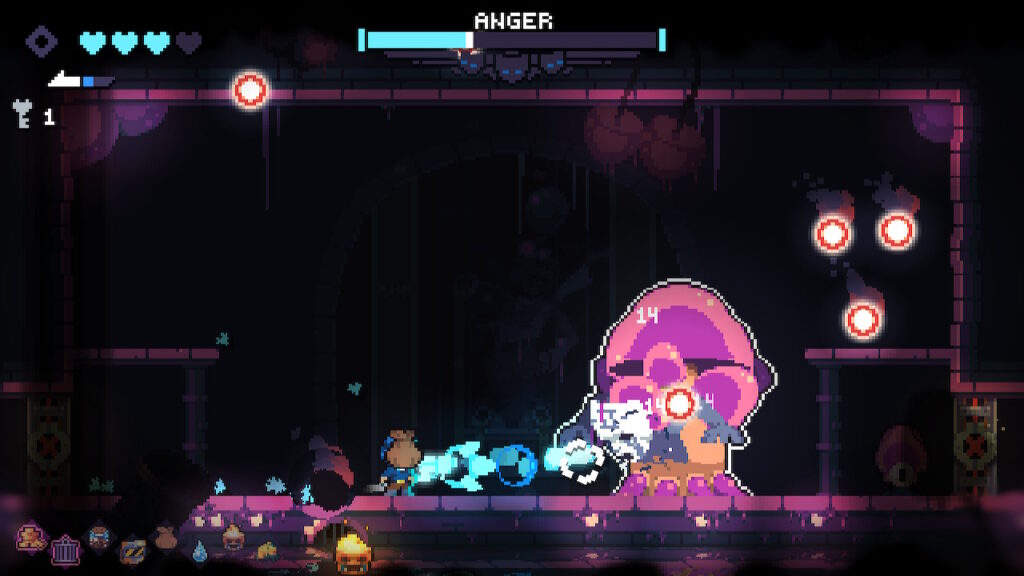
Revita is fast paced. Not your normal lots of things going on fast paced but instead, you can blow through an entire loop in this pixel art roguelite in less than 3 minutes if you’re not paying attention. Normally, these types of titles are a bit more sedentary, with even active games like Dead Cells building winding corridors and tunnels that might take a half hour or more in a run. Not Revita though.
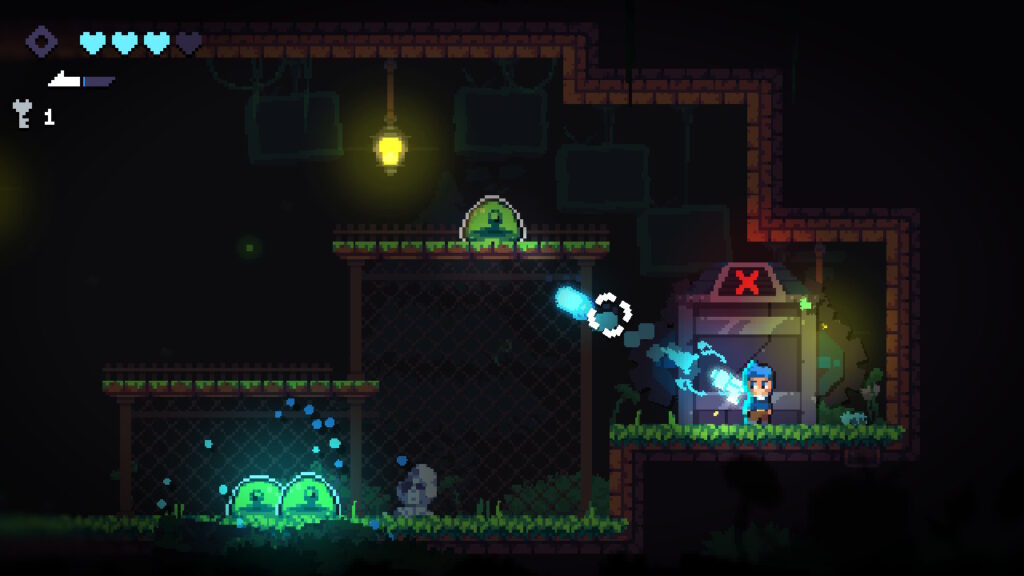
In Revita, you play a boy who is climbing up a clock tower filled with monsters. It’s not entirely clear what’s happening or why, but you find yourself on a subway car that has taken you to a station where you appear to be tracking down your lost memories. With the warnings of depictions of suicide and self-harm, there are definite indicators as to the real meaning of the story, but none of that is clear for quite some time during gameplay. Every time you die, you return to the train station and start anew. This in and of itself isn’t unique to the roguelite genre, but the mechanics of Revita definitely are.
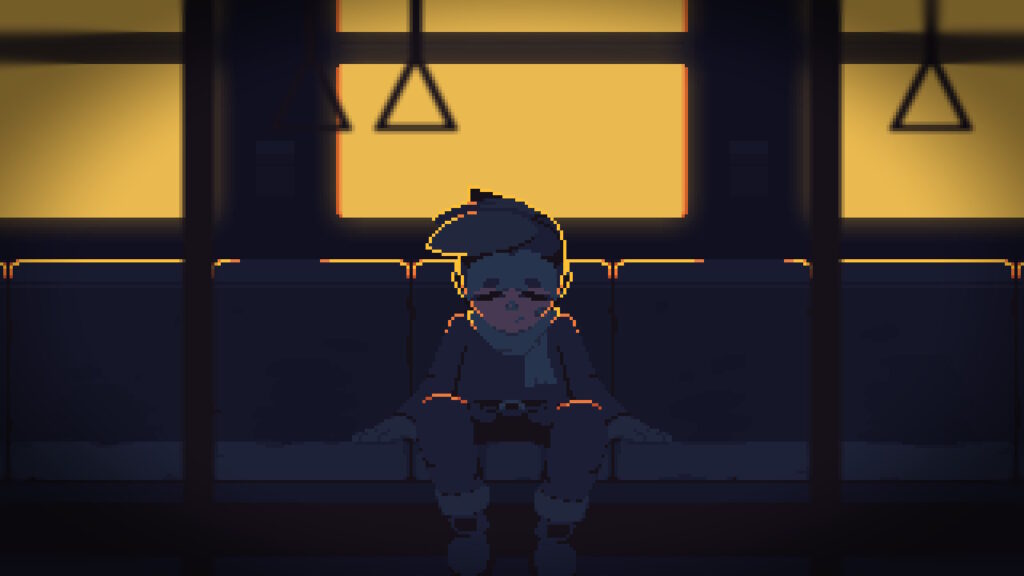
Once you enter the tower, you are put into a series of random rooms. The first thing you’ll notice is that the rooms are incredibly small. Significantly smaller than the average game of this type in fact. Then the enemies spawn and attack. Slaughter them all and you automatically collect their spirits, then can move on to the next floor of the tower. Combat is a bit different than you might expect though. Aiming your gun is mapped to the right stick as this is a twin stick action game, but it is a bit inaccurate and it’s often hard to hit enemies in the tight quarters. This has been addressed in the gameplay options though, allowing you to change the targeting to allow for assistance. Because of the twin stick layout, it’s essentially impossible to use the face buttons for firing or other actions, so everything is mapped to the shoulder buttons. The right trigger fires, the left dashes, and the left bumper jumps. It’s an awkward layout to get used to at first (don’t worry, it starts feeling natural fairly quickly), especially since Revita requires a fair amount of precision and you’re in close quarters with the enemies. Luckily, you can literally dash through enemies and bullets, cling to walls, and even dash in the air.
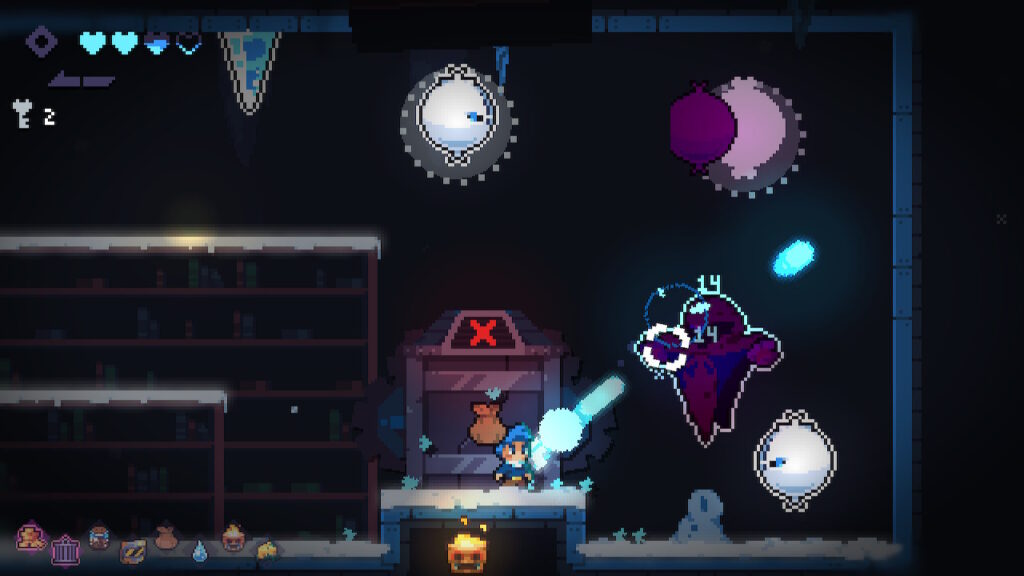
If you’re thinking combat sounds a bit frantic, it definitely is. The dash attack keeps you from getting cornered, but there are enemies aplenty with environmental hazards like spikes and poison gas to boot. And you have 4 hearts to start. Take a few hits, and you’re simply dead. It’s pretty challenging to make it all the way through the levels of each tower concurrently with life that low, much less defeat a boss! Fortunately, there’s a focus button that allows you to recharge your life if you kill enough enemies. Sadly, it takes quite a long time to charge it up and each segment only charges half a bar.
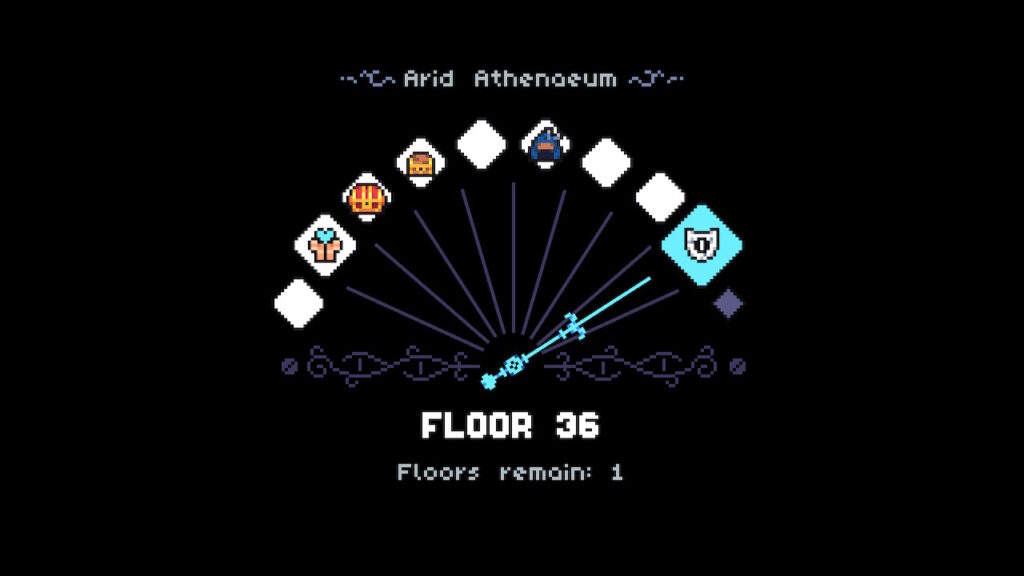
As you progress, certain areas will have treasure chests that you can unlock with keys once the enemies are defeated, others will have stores. But the currency isn’t the souls of the dead enemies you pick up. Instead it’s your life itself. Remember that measly four hearts? It’s up to you to decide whether you want to sacrifice one to a goddess statue or open a treasure chest by burning one of them for a random reward. That’s right, random…very random. It might just end up being a 5% damage boost or an extra hit. It might be completely useless. It might be cursed and screw over your run. You just don’t know. But no risk, no reward in Revita, which is the key mechanic that makes the game interesting. Should you sacrifice half a heart for a power boost? Or a whole heart to increase your firing rate by 10%? Will you be able to do enough damage to defeat a boss if you don’t? And with the final version of the game, is it all worth it if you’re going to end up cursed anyway and unable to even see some enemies properly? It’s all up in the air and if you get the wrong rooms, you won’t be able to focus fast enough to regain those hearts. Make the wrong choices and you’re in just as tight of a spot, especially when it comes to heart management.
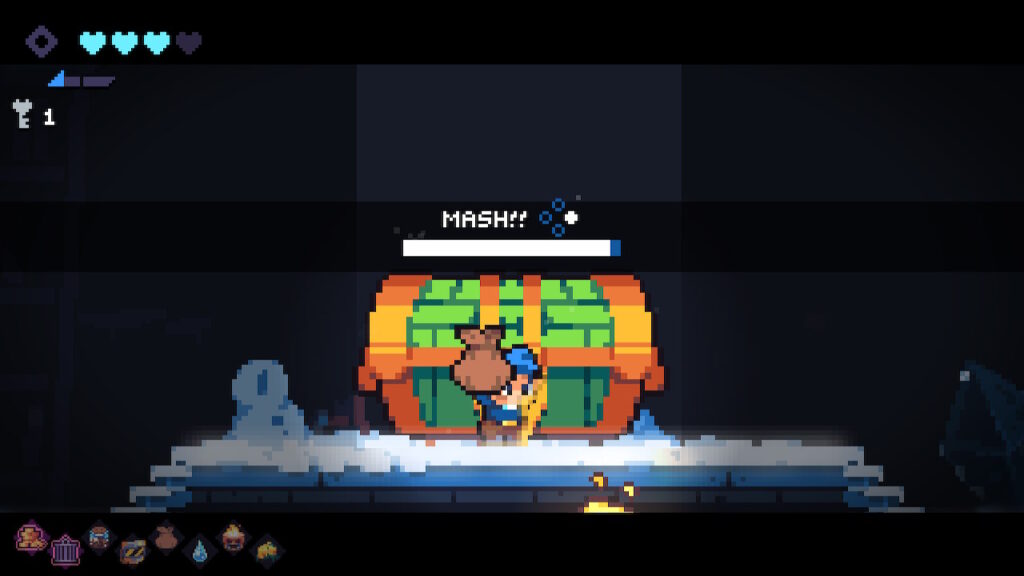
Needless to say, this is a fairly stressful decision-making process. And chances are good that regardless, you’ll probably die a lot, and pretty fast too. Perhaps some people will really take to the controls but it often seemed like gameplay consisted of fighting the targeting system while trying vainly to coordinate jumping and dashing with the same fingers and then running into enemy fire and dying. Now that the game is in its final form, Revita feels smoother to play than it did a year ago. With a bit of practice (and some luck with rooms) you can easily blow through the first few stages and get to the newer parts of the game. The early access version had three main floors available for gameplay, but there’s a lot more here now with an absolute wealth of additions, updates and changes so large that there’s simply not enough time in this review to detail them all.
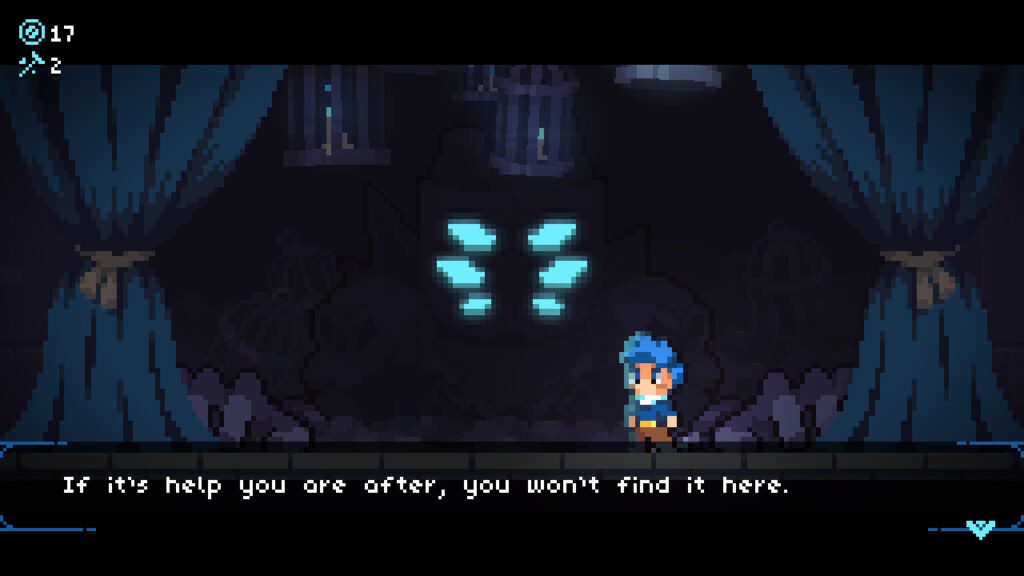
Sure, its pixel art with large pixels, but the overall movement and collision detection is great and the load times are almost instantaneous. It’s nice to be able to whip through gameplay without waiting interminably for a change. In fact, the overall graphic design for Revita is quite nice with interesting enemies, solid backgrounds, easily discernible foregrounds, and unique bosses. The music is pretty great too and sound effects are well-done. The controls might feel a bit weird at first, but the rebalancing and changes have made Revita noticeably more playable since its initial release. Even so, if you’re down to your last heart, stress levels rise fast because death means fighting not just back through the last tower you finished, but all the towers right from the beginning. And since health is also currency, you really have to think carefully before upgrading! Speaking of currency, there are actually two types in Revita. One is health, the other is souls. Kill an enemy, collect some souls. When you die, the souls are refined into further currency which you can then take back to the train station and spend on both upgrades and cosmetic improvements. The upgrades are definitely more worthwhile than the cosmetics, but even this has changed, ensuring that you’re not wasting your upgrade currency on cosmetics for your train station. It’s amazing how far Revita has come in little more than a year and this polished gem of an indie title will definitely endear itself to you.

So what’s the verdict? Revita is a neat game with fast gameplay, cool pixel graphics, and excellent overall gameplay design. The long and the short of it all is that this final version of Revita is more player friendly, more responsive, contains a ton more content including weapons, armor, gameplay tweak options, secrets galore, new levels, and a lot more. While the game was excellent before, it’s now an incredibly impressive indie title that is well-worth your attention. At $17 on the Switch, it’s a hell of a fun roguelike that never feels quite the same on subsequent playthroughs.

This review was based on a digital copy of Revita provided by the publisher. It was played on Nintendo Switch in both docked and undocked modes and was excellent in both. Revita is also available for PC on Steam, of course.
